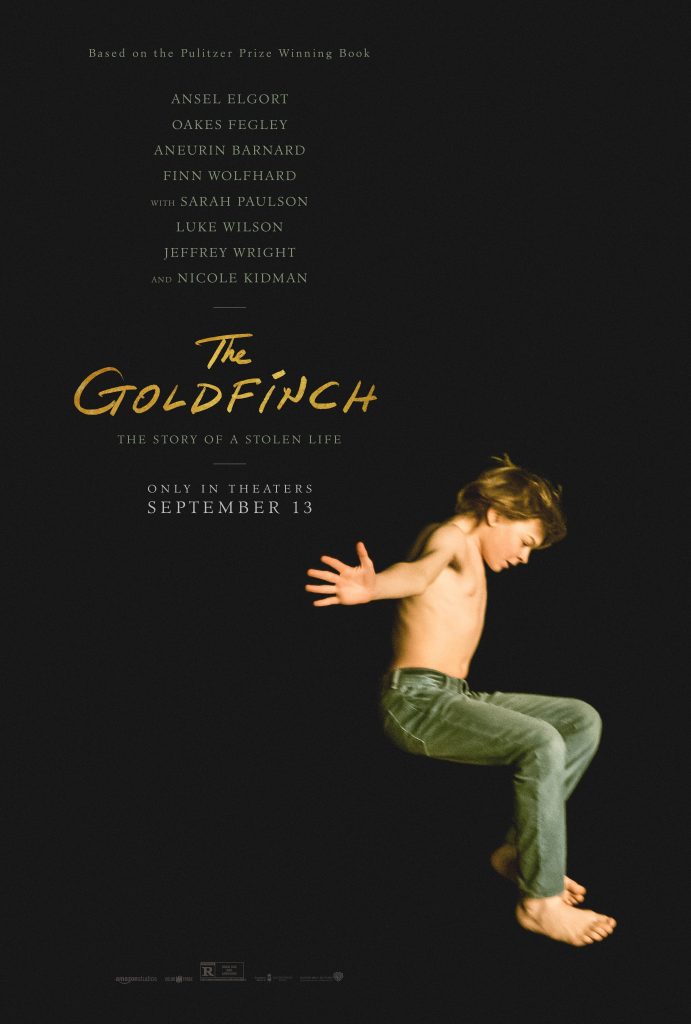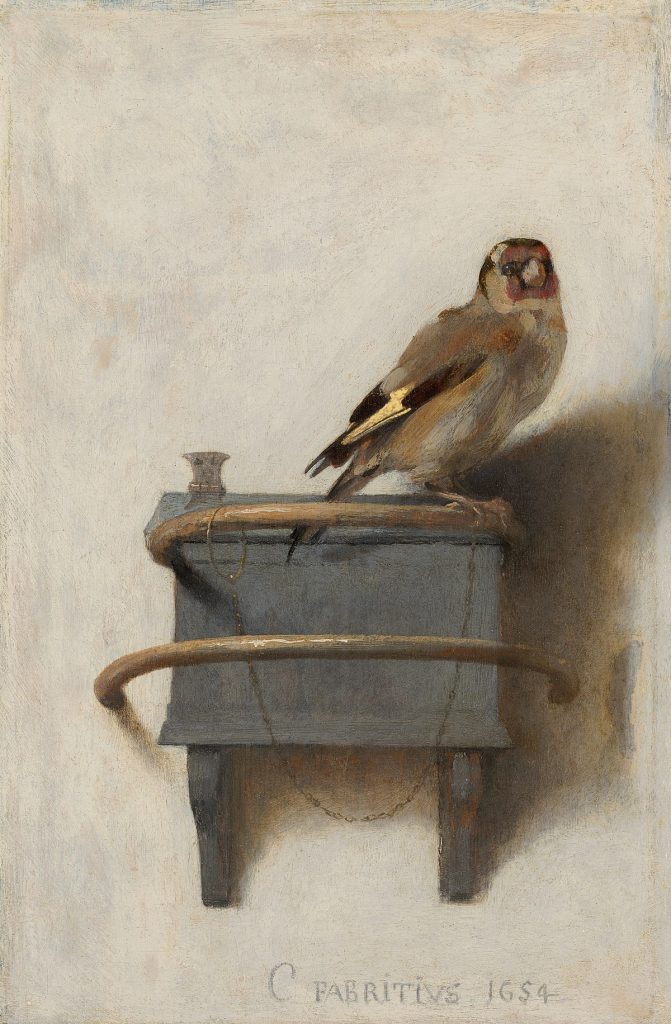So, the film adaptation of Donna Tartt’s Pulitzer-Prize-winning novel The Goldfinch, which involves Carl Fabritius’ 1654 painting of the same name, came out several weeks ago. And your blogger has quite a few mixed feelings. Rather than subject you to a lenthy post, though, this post will seek to answer a few questions: just how much did the film “get right” from the novel, and what does this have to do with art history? (This post, which is primarily the author’s opinion, will take a look at the film and the book in tandem, so feel free to go back and reread our post on the novel if you haven’t already.)

How much is the movie like the book? While fans of the book shouldn’t expect the same level of nuance in the film (it would be impossible to capture all of Tartt’s detail in any film adaptation, let alone this one), they should feel some comfort in the fact that movie isn’t a complete departure from its source material. All of the major characters and plot points are there, though not probed as intensely as they were in the novel. The movie also dances around the idea of art and immortality throughout, never coming close to Theo’s introspective revelations in the novel’s last pages.
All the characters are played with aplomb, though for some reason there’s quite a lot of camera time spent on Mrs. Barbour. In the book, she’s not nearly as central a figure as she is in the film. In addition, in the movie, Mrs. Barbour senses and fosters Theo’s attraction to art and antiques, something that was not played up in the book. Aneurin Barnard and Finn Wolfhard do Boris, this author’s favorite character, justice–despite the fact that there should have been, in her opinion, much more depth to Boris and Theo’s friendship shown. Jeffrey Wright is also excellent as Hobie, though he’s not given nearly as much screen time as he deserves.
How much art history is covered in the movie? Sadly, though perhaps not surprisingly, there’s less on The Goldfinch‘s art-historical importance as a painting in the movie than there is in the book. Apart from a few brief lines sketching Fabritius (its creator), the Delft gunpowder explosion, and the painting’s miraculous survival, viewers are left wondering why this painting is so important. The movie’s answer: because Welty told Theo to take it, the media mourns it, and it was Theo’s mom’s favorite. Which are all valid…but viewers without an artistic background will probably be left thinking, “why did he take that?” Alas.
Altogether, the movie was a fair attempt at a summary of the novel. The movie boils down the book’s intricacies into plot points, which is to be expected of just about any adaptation. A few repetitive lines about the immortality of art and failing to protect treasures can’t fully capture the depth of feeling and storytelling the novel reaches…

…and reminds us that books and movies, like art and life, hold the potential for so much more than what’s on the surface. The movie captures the substance of that thought, though it doesn’t probe it as much as I’d hoped. On the whole, it’s a fair adaptation–neither a colossal disappointment nor a surprisingly mind-blowing retelling. People who did not enjoy the book because of its length might appreciate the film more for its less detailed approach. Though I don’t fall into that camp because of my appreciation for the novel’s length, I can see why it would be a draw, and respect that. But you’ll have to see the movie for yourself to compare the two.
What did you think of The Goldfinch? Share your thoughts with us in the comments!
What do we do here at the Art Docent Program? Discover more about us here!
Want more on the novel or other art-historical movies? Check out our blog!







